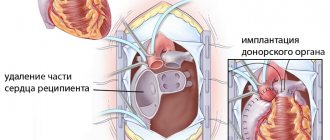What does the change in atmospheric pressure depend on?
A deviation of the barometer needle by 10 mm in one direction or another is sensitive to humans. And pressure drops occur for several reasons.
Seasonality
In summer, when the air warms up, the pressure on the mainland drops to its minimum values. In winter, due to heavy and cold air, the barometer needle reaches its maximum value.
Times of Day
In the morning and in the evenings, the pressure usually rises slightly, and in the afternoon and midnight it becomes lower.
Zoning
Atmospheric pressure also has a pronounced zonal character. The globe is divided into areas with a predominance of high and low pressure. This happens because the Earth's surface warms up unevenly.
At the equator, where the land is very hot, warm air rises and areas of low pressure are formed . Closer to the poles, cold, heavy air descends to the ground and presses on the surface. Accordingly, a high pressure zone is formed here.
Often the success or failure of a mountain hike, climbing, or just a walk in the mountains depends on the weather. Knowledge of the weather and the ability to predict it is an important aspect of life safety. Therefore, we read an article devoted to weather mechanisms and weather predictions. Don't forget to comment.
Weather in the mountains (Chapter from the book Mountaineering Skills. Training course. P. Hill, S. Johnston. The book, by the way, is sold in bookstores)
This chapter highlights important weather features in mountainous areas that need to be taken into account by those for whom mountains are a place for organizing and spending leisure time. It should be noted that although mountaineering and mountaineering enthusiasts have a large number of first-class publications available on the subject of mountain weather, this book focuses on practical techniques for predicting the weather in advance of and during a planned trip. The reader will be introduced to the different weather conditions one may encounter in the mountains, both in summer and winter.
Our goal is to instill a general understanding of the principles of weather formation, teach how to read weather maps, identify prevailing conditions, and recognize the approach of dangerous weather events.
PRESSURE DETERMINES THE WEATHER
To understand the mechanism of weather formation, it is first necessary to realize that weather is the result of the interaction of atmospheric factors. Atmospheric pressure varies greatly in different places at different times. Climbers are well aware that the higher you go in the mountains, the lower the pressure. Meteorologists identify areas of high and low pressure on the earth's surface.
■ Heavier descending air near the ground stops, then, under pressure from above, it spreads towards the lowest pressure, and the resulting movement of air masses is called wind. ■ The greater the contrast between areas of high and low pressure, the stronger the wind. Weather maps show high and low pressure centers. Changes in pressure and, accordingly, the strength and direction of the wind can also be predicted using isobars. ■ The smaller the distance between the isobars, the greater the pressure drop, which means the stronger the wind. ■ Before going to the mountains, observe the isobars of the area on a weather map for several days. If the distance between them is consistently large, it means that a stable area of high pressure has formed, and the weather, apparently, will not change.
If the wind is at your back, the center of the low pressure area is to your left. This way you can imagine your position relative to the low pressure system.
ATMOSPHERIC FRONTS
Basic Principles In the context of the following sections, it is important to remember that cold air is heavier than warm air. It is also important to understand that warm air can contain much more moisture than cold air, but as it rises it expands and cools, and the amount of moisture in it decreases.
Warm and cold fronts In addition to isobars, weather maps show the location of warm and cold atmospheric fronts. The corresponding lines indicate the boundary between air masses with different characteristics.
Warm air
As warm air spirals around a center of low pressure, it rises above the cold air and forms a warm front.
As warm air rises, it cools, the moisture it contains condenses into steam, clouds form, and the likelihood of precipitation increases. On a weather map, a warm front is indicated by a line with semicircles directed in the direction of the front's movement.
Cold Air The warm, wet and windy weather behind the warm front will soon be replaced by colder, heavier air. It will wedge itself under the warm one, forcing it to rise. A cold front is indicated on weather maps by a line with triangles, the free vertices of which indicate the direction of movement of the front. The figure shows warm and cold fronts, as well as weather dynamics at higher elevations.
Temperature inversion Manifests itself in the blocking of cold air between the tops of mountains and the surface of the earth, which is often observed in valleys. Warmer air is located on top of cold air, as a result of which the cold air is saturated with moisture, which leads to the appearance of dense fogs in the lowlands, and at the level of mountain peaks the weather can be magnificent.
Wind force Wind force is generally determined by the pressure gradient: the greater the pressure difference, the higher the speed of the air flow.
As already mentioned, the closer the isobars are located to each other, the stronger the wind. The higher you go, the lower the pressure, the thinner the air, and the faster air currents can move.
If your intended route passes through mountain ranges, it may be worth considering other route options, as strong gusts of wind may be encountered on the ridges.
■ Although wind speeds up to 70 km/h are classified as gale force winds, most people tolerate them normally. ■ Wind up to 100 km/h - stormy, turning into hurricane, in which even the most experienced climbers prefer to look for a calmer place. ■ Gusts in excess of 10 km/h are unbearable for most and carry an increased risk of being knocked down and injured.
Mini-dictionary of winds ■ A gust of wind is a sudden short-term (for a few seconds) increase in wind. ■ Squall - an expected increase in wind speed lasting up to several minutes. ■ A gale is a very strong wind. ■ Calm—a decrease in wind speed.
Cloud Formation: Approaching Warm Front While in the mountains, monitor the front's progress, paying attention to increasing and spreading cloud cover. The sequence of appearance of clouds during the passage of a warm front is as follows: ■ cirrus clouds; ■ cirrocumulus clouds (wing clouds).
These clouds form at high altitudes - about 9 thousand meters - and serve as the first sign of the onset of moisture condensation. The line of contact between the mass of cool and rising warm air is not vertical, but oblique, and therefore early warning signs of an approaching front appear high above the ground.
Cirrus clouds warn of impending changes in the weather for the worse several hours in advance, and further cloudiness is likely to intensify and spread. If the clouds clear and the sky clears, the weather is likely to be good.
ADDITIONAL NOTES Watch the sky, especially in the west, where most of the signs of future weather appear. Altocumulus and altostratus clouds form at mid-altitude, with the former preceding the latter, after which the entire sky soon becomes cloudy.
Then the front drops much lower, and soon the weather will begin to change at ground level. The next stage of stratus clouds is a continuous cloud cover blocking the sun with a high probability of precipitation.
Cloud Formation: Approaching Cold Front Cumulus clouds appear and the weather begins to change dramatically as the cold front approaches. First, as warm air is displaced upward by cold air, heavy rain falls. Then the temperature drops and the sky clears. Dense and heavy clouds are carried away by the wind, the sun appears, clear weather sets in with its characteristic cumulus clouds. Only brief showers are possible.
High atmospheric pressure High pressure often indicates settled good weather caused by stable downward air currents that do not tend to rise. (Low pressure usually indicates unstable air masses, accompanied by wind and rain.)
As the Earth moves in a spiral, air currents also spiral out from areas of high pressure and flow into areas of low pressure. In the northern hemisphere, air flows rotate clockwise around high pressure areas and counterclockwise around low pressure areas. In the southern hemisphere the opposite is true.
CLOUDS IDENTIFICATION
Orographic rise of air masses Clouds are formed with the rise of air heated at the surface of the earth, which expands and cools with height. At the condensation level, the air reaches its dew point, and above this level clouds begin to form. Air rise can occur in different ways. The two most common methods are:
- orographic: air rises over hills and mountain peaks;
- turbulent: air currents are formed by winds over rough terrain.
| Height | Clouds of stable weather | Unsettled weather clouds |
| Small | Stratus Stratocumulus Stratocumulus | Cumulus |
| Average | Altostratified | Altocumulus |
| Big | Cirrus Cirrostratus | Cirrocumulus |
Low altitude Stratus and stratocumulus clouds cover the tops of mountains, often rain with drizzle and significantly limit visibility on the slopes, especially in winter. The situation is associated with stormy winds that drive clouds across the peaks.
Nimbostratus clouds, as the name suggests, promise rain. Their powerful body produces larger drops of water.
Cumulus and cumulonimbus clouds are associated with heavy rainfall, often short-lived, lasting no more than an hour. Shots of heavy rain are interspersed with clearing and bright sunshine.
Cumulus clouds form primarily over the plains in warm and sunny weather. They are easily recognized by their flat bottom edge and tall towers at the top. After a few hours, the cumulus clouds develop into cumulonimbus, the towers of which increase in size, grow at their apex, taking on the shape of an anvil, and cover the horizon.
This type of weather often occurs high in the mountains near a large area of low pressure.
Average altitude Altostratus clouds have little effect on weather patterns. Meanwhile, it is the development of cloudiness into this type of cloud that foreshadows the approach of a warm front. The clouds obscure the sun, which is visible through them as a bright spot. The sky turns gray and the wind picks up.
Altocumulus clouds bear little resemblance to cumulus and have a layered structure and ragged edges. They gradually gain thickness and sink towards the ground, which is usually a sign of an unstable atmosphere. Rainfall and thunderstorms are likely.
High altitude Observed cirrus, cirrostratus and cirrocumulus clouds have little influence on weather patterns. Cirrus clouds are light and translucent, like bird's down. A sky with cirrocumulus clouds is sometimes also called a sky with winged clouds; it resembles a cobblestone street. Cirrocumulus clouds are replaced by even higher cirrostratus clouds, indicating the approach of a warm front. If you are high in the mountains, time your actions so that you will be below within six hours, as cirrostratus clouds often foreshadow gale force winds.
VERTICAL GRADIENT
The vertical gradient refers to the temperature difference between sea level and higher elevations. Knowing the value of the gradient and receiving temperature information from the weather forecast - this is usually given for areas located at sea level - you can calculate the temperature at various altitudes when descending or ascending.
Information of this kind is of great importance for route planning, especially when it comes to winter ascents and accompanying groups.
| Temperature drop | Height above sea level | Air condition |
| on HS | every 100 m | dry |
| on HS | every 200 m | wet |
| on HS | every 150 m | normal |
WEATHER DATA SOURCES
It should be noted that the forecast retains its full value only for six hours. That is why it is so important to master the techniques of its correct interpretation. Ideally, you need to know what the weather will be like in the mountains throughout your trip. In addition, you should have the skills to identify early signs of stormy winds, poor visibility, and approaching fronts that herald changes in the weather.
Today, the number of sources of synoptic data capable of providing a prompt and fairly accurate weather forecast is large. A good way to prepare is to analyze the weather of the several days before going to the mountains. Especially in winter. The information will allow you to determine the development of the synoptic situation and the likely weather conditions along the route. You can get the forecast from the following sources: ■ weather service telephones and faxes; ■ weather and avalanche forecasts from control centers for avalanche-prone areas; ■ Internet; ■ radio; ■ television; ■ local and national press; ■ observation.
It should also be taken into account that weather forecasts are updated several times a day, and in the evening a forecast for the next day is given.
How are atmospheric and blood pressure related?
This means that if you climb Mount Belukha (4,506 m), from the foot to the top, the temperature will drop by 30°C and the pressure will drop by 330 mm Hg. This is why high-altitude hypoxia, oxygen starvation, or miner's disease occurs in the mountains!
A person is designed in such a way that over time he gets used to new conditions. Stable weather has established itself - all body systems work without failures, the dependence of blood pressure on atmospheric pressure is minimal, the condition is normalized. And during periods of change of cyclones and anticyclones, the body fails to quickly switch to a new mode of operation, health worsens, blood pressure may change, and blood pressure may jump.
Arterial, or blood pressure, is the pressure of blood on the walls of blood vessels - veins, arteries, capillaries. It is responsible for the uninterrupted movement of blood through all vessels of the body, and directly depends on the atmospheric one.
First of all, people with chronic heart and cardiovascular diseases suffer from horse racing (perhaps the most common disease is hypertension).
Also at risk are:
- Patients with neurological disorders and nervous exhaustion;
- Allergy sufferers and people with autoimmune diseases;
- Patients with mental disorders, obsessive fears and anxiety;
- People suffering from lesions of the articular apparatus.
Baric Mountain: what is the danger of an abnormal rise in atmospheric pressure?
In Moscow, atmospheric pressure records are being set - one after another. The value tends to 770 mmHg. Professor, Doctor of Medical Sciences, President of the National Society of Preventive Cardiology Nana Pogosova told the MIR 24 TV channel how such pressure affects health
— Atmospheric pressure indicators for six days in a row exceed the norm by 15–20 units.
How can this affect a person’s well-being? The climate has become nervous
What should humanity prepare for? Nana Pogosova:
Any changes in atmospheric pressure one way or another affect people’s well-being. It’s just that for the vast majority of people these changes go almost unnoticed, but there is a certain group of people – weather-sensitive people who react to a greater extent.
— With high blood pressure, hypertensive people feel worse, and hypotensive people feel better?
Nana Pogosova:
Yes you are right. First of all, people with diseases, primarily cardiovascular diseases, react to changes in weather, climate, and disasters. Among them, it is worth highlighting hypertensives - people with chronically high blood pressure.
Not only these people react to changes, but also people with nervous diseases, people with a tendency to allergies, people with diseases of the musculoskeletal system. As for hypotensive people, as doctors say, hypotensive people are potential hypertensive people. Often, some hypotensive people feel more alert during periods of increased atmospheric pressure, but not all.
— What happens to hypertensive patients?
Nana Pogosova:
During this period, their blood pressure may destabilize. As a rule, the majority complain of a pressing, severe headache and increased blood pressure. If their blood pressure is traditionally high, then these numbers may be higher. There are such sensations as rapid heartbeat, discomfort in the heart area, they complain of decreased performance. That usual set of symptoms.
- If you don’t react, how can this end?
Nana Pogosova:
Of course, there is no such data to say that there is a direct connection between an increase in atmospheric pressure and an increase in heart attacks and strokes, but some small cataclysms in the form of a lung crisis do occur. That is why the main recommendation for weather-sensitive people, especially hypertensive patients, is to be more attentive to blood pressure readings.
This is an important element in the life of a person with high blood pressure - self-control. We always recommend measuring your blood pressure in the morning and evening so that you are aware of these numbers if you need to take an additional dose of medications.
— You said that allergy sufferers may experience aggravation due to increased atmospheric pressure. Why?
Nana Pogosova:
There are scientific studies that show that with increased atmospheric pressure there is a decrease in the number of leukocytes in the blood. This indicates that the immune system is suffering. If this is a long period, a tendency to susceptibility to infectious diseases appears. In addition, usually when there is high pressure, weather forecasters talk about an anticyclone. During an anticyclone, as a rule, there is calm weather, and as a result there is a high concentration of various harmful substances, which are very typical for megacities. They are allergens and can provoke exacerbation of allergic reactions, diseases and diseases of an allergic nature.
— How to reduce possible consequences from the vagaries of nature?
Nana Pogosova:
During this period, it is advisable, as I already said, to measure the pressure. It is very important to give the body the opportunity to adapt more effectively during this period - not to get too tired, adhere to the principles of a healthy diet, for example, limit salt. Hypertensive patients generally need to limit salt, and especially during periods of cataclysms.
There are mood swings - something positive for yourself, for the soul, in order to offset the negative emotional background, which often also causes discomfort and psychological stress.
— Is it worth observing a special regime?
Nana Pogosova:
Low physical activity is a very bad thing because it leads to a decrease in vascular tone. As a rule, people who have low physical activity are in the forefront of weather-sensitive citizens. Increasing physical activity is a universal and centuries-proven method of increasing vascular tone and increasing the body's adaptive reserves. Those who adhere to the principles of a healthy diet and sufficient physical activity adapt well. Walking - yes: both leisurely and easy Nordic walking is an excellent solution for improving mood, increasing the activity of the immune system, and stabilizing the functioning of the cardiovascular system.
— Is it better not to overdo physical exercise these days?
Nana Pogosova:
Yes, it is better not to overindulge in heavy physical activity, but a little physical activity in the video of morning exercises or a leisurely walk is more than shown.
— Limit tonic drinks too?
Nana Pogosova:
We said that during this period blood pressure naturally rises because external pressure rises; accordingly, it is better not to abuse drinks that contribute to an increase in blood pressure due to their tonic effect. I’m not saying that hypertensive patients shouldn’t have coffee at all (this is wrong), but it is true that during this period it is better not to abuse this drink or dark tea, which contains a lot of caffeine. If it’s coffee, it’s weak and infrequent during the day; tea is also weak.
How does a cyclone affect the human body?
A cyclone is an area with low atmospheric pressure. The thermometer drops to 738-742 mm. rt. Art. The amount of oxygen in the air decreases.
In addition, low atmospheric pressure is distinguished by the following symptoms:
- Increased humidity and air temperature,
- Cloudiness,
- Precipitation in the form of rain or snow.
People with diseases of the respiratory system, cardiovascular system and hypotension suffer from such weather changes. Under the influence of a cyclone, they experience weakness, lack of oxygen, difficulty breathing, and shortness of breath.
Some weather-sensitive people experience increased intracranial pressure, headaches, and gastrointestinal disorders.
Video: Atmospheric pressure and human well-being
We'll tell you what to do at low atmospheric pressure. Hypotonic patients need to monitor their blood pressure during a cyclone. It is believed that pressure from 130/90 mm Hg, increased for hypotensive patients, may be accompanied by symptoms of a hypertensive crisis.
Therefore, you need to drink more fluids and get enough sleep . In the morning you can drink a cup of strong coffee or 50 g of cognac. To prevent weather dependence, you need to harden the body, take vitamin complexes that strengthen the nervous system, tincture of ginseng or eleutherococcus.
How does an anticyclone affect the body?
When an anticyclone approaches, the barometer needles creep up to the level of 770-780 mm Hg. The weather changes: it becomes clear, sunny, and a light breeze blows. The amount of industrial pollutants harmful to health is increasing in the air.
High blood pressure is not dangerous for hypotensive patients.
But if it increases, then allergy sufferers, asthmatics, and hypertensives experience negative manifestations:
- Headaches and heartaches,
- Decreased performance,
- Increased heart rate,
- Redness of the face and skin,
- Flickering of flies before the eyes,
- Increased blood pressure.
Also, the number of leukocytes in the blood decreases, which means a person becomes vulnerable to disease. With blood pressure 220/120 mmHg. there is a high risk of developing hypertensive crisis, thrombosis, embolism, coma.
Is it possible to reduce weather sensitivity?
It is possible to reduce weather dependence if you follow simple but effective recommendations from doctors.
- The advice is banal, follow a daily routine . Go to bed early, sleep at least 9 hours. This is especially true on days when the weather changes.
- Before bed, drink a glass of mint or chamomile tea . It's calming.
- Do a light warm-up in the morning, stretch, massage your feet.
- After gymnastics, take a contrast shower .
- Get in a positive mood . Remember that a person cannot influence the increase or decrease in atmospheric pressure, but it is within our power to help the body cope with its fluctuations.
Summary : weather dependence is typical for patients with pathologies of the heart and blood vessels, as well as for older people suffering from a bunch of diseases. People with allergies, asthmatics, and hypertension are at risk. The most dangerous for weather-sensitive people are sudden changes in atmospheric pressure. Hardening the body and a healthy lifestyle saves you from unpleasant sensations.
Atmosphere pressure
Since air has mass and weight, it exerts pressure on the surface in contact with it. It is calculated that a column of air with a height from sea level to the upper boundary of the atmosphere presses on a 1 cm area with the same force as a weight of 1 kg 33 g. Man and all other living organisms do not feel this pressure, since it is balanced by their internal air pressure. When climbing in the mountains, already at an altitude of 3000 m, a person begins to feel unwell: shortness of breath and dizziness appear. At an altitude of more than 4000 m, a nose may bleed, as blood vessels rupture, and sometimes a person even loses consciousness. All this happens because atmospheric pressure decreases with altitude, the air becomes rarefied, the amount of oxygen in it decreases, but a person’s internal pressure does not change. Therefore, in airplanes flying at high altitudes, the cabins are hermetically sealed, and they are artificially maintained at the same air pressure as at the surface of the Earth. Pressure is measured using a special device - a barometer - in mm of mercury.
It has been established that at sea level at parallel 45° with an air temperature of 0°C, atmospheric pressure is close to the pressure produced by a column of mercury 760 mm high. The air pressure under such conditions is called normal atmospheric pressure. If the pressure indicator is greater, then it is considered increased, if less, it is considered decreased. When climbing mountains, for every 10.5 m, the pressure decreases by approximately 1 mmHg. Knowing how pressure changes, you can use a barometer to calculate the altitude of a place.
Pressure changes not only with altitude. It depends on the air temperature and the influence of air masses. Cyclones lower atmospheric pressure, and anticyclones increase it.
Standard USA atmosphere
"The 1976 United States Standard Atmosphere is an idealized representation of the Earth's atmosphere in a static state from the surface to an altitude of 1000 km." The model is based on existing international standards and mainly uses the methodology adopted by the International Standard Atmosphere (ISA). The model equations were adopted by the United States Committee on Extension to the Standard Atmosphere (COESA), which represented 29 US scientific, government, military and engineering organizations. In the model, the atmosphere is divided into seven layers up to a maximum altitude of 86 km. The main difference between the US Standard Atmosphere and the International Standard Atmosphere is the proposed temperature distribution at high altitudes, which is not considered in this calculator.
How does altitude affect a person's well-being?
The main negative factor affecting the human body at altitude is the lack of oxygen. It is as a result of hypoxia that acute disorders of the heart and blood vessels, increased blood pressure, digestive disorders and a number of other pathologies develop.
Hypertensive patients and people prone to pressure surges should not climb high into the mountains and it is advisable not to take long flights. They will also have to forget about professional mountaineering and mountain tourism.
The severity of the changes occurring in the body made it possible to distinguish several altitude zones:
- Up to one and a half to two kilometers above sea level is a relatively safe zone in which no special changes are observed in the functioning of the body and the state of vital systems. Deterioration in well-being, decreased activity and endurance are observed very rarely.
- From two to four kilometers - the body tries to cope with the oxygen deficiency on its own, thanks to increased breathing and taking deep breaths. Heavy physical work, which requires the consumption of large amounts of oxygen, is difficult to perform, but light exercise is well tolerated for several hours.
- From four to five and a half kilometers - the state of health noticeably worsens, and it is difficult to perform physical work. Psycho-emotional disorders appear in the form of high spirits, euphoria, and inappropriate actions. When staying at such a height for a long time, headaches, a feeling of heaviness in the head, problems with concentration, and lethargy occur.
- From five and a half to eight kilometers - it is impossible to do physical work, the condition worsens sharply, and the percentage of loss of consciousness is high.
- Above eight kilometers - at this altitude a person is able to maintain consciousness for a maximum of several minutes, after which deep fainting and death follows.
For metabolic processes to occur in the body, oxygen is necessary, the deficiency of which at altitude leads to the development of altitude sickness. The main symptoms of the disorder are:
- Headache.
- Increased breathing, shortness of breath, lack of air.
- Nose bleed.
- Nausea, attacks of vomiting.
- Joint and muscle pain.
- Sleep disorders.
- Psycho-emotional disorders.
At high altitudes, the body begins to experience a lack of oxygen, as a result of which the functioning of the heart and blood vessels is disrupted, arterial and intracranial pressure increases, and vital internal organs fail. To successfully overcome hypoxia, you need to include nuts, bananas, chocolate, cereals, and fruit juices in your diet.
Effect of altitude on blood pressure levels
When rising to a high altitude, a decrease in atmospheric pressure and thin air cause an increase in heart rate and an increase in blood pressure. However, with a further increase in altitude, blood pressure levels begin to decrease. A decrease in the oxygen content in the air to critical values causes depression of cardiac activity and a noticeable decrease in pressure in the arteries, while in the venous vessels the levels increase. As a result, a person develops arrhythmia and cyanosis.
Atmosphere pressure
Since air has mass and weight, it exerts pressure on the surface in contact with it. It is calculated that a column of air with a height from sea level to the upper boundary of the atmosphere presses on a 1 cm area with the same force as a weight of 1 kg 33 g. Man and all other living organisms do not feel this pressure, since it is balanced by their internal air pressure. When climbing in the mountains, already at an altitude of 3000 m, a person begins to feel unwell: shortness of breath and dizziness appear. At an altitude of more than 4000 m, a nose may bleed, as blood vessels rupture, and sometimes a person even loses consciousness. All this happens because atmospheric pressure decreases with altitude, the air becomes rarefied, the amount of oxygen in it decreases, but a person’s internal pressure does not change. Therefore, in airplanes flying at high altitudes, the cabins are hermetically sealed, and they are artificially maintained at the same air pressure as at the surface of the Earth. Pressure is measured using a special device - a barometer - in mm of mercury.
It has been established that at sea level at parallel 45° with an air temperature of 0°C, atmospheric pressure is close to the pressure produced by a column of mercury 760 mm high. The air pressure under such conditions is called normal atmospheric pressure. If the pressure indicator is greater, then it is considered increased, if less, it is considered decreased. When climbing mountains, for every 10.5 m, the pressure decreases by approximately 1 mmHg. Knowing how pressure changes, you can use a barometer to calculate the altitude of a place.
Pressure changes not only with altitude. It depends on the air temperature and the influence of air masses. Cyclones lower atmospheric pressure, and anticyclones increase it.
Does pressure increase or decrease in the mountains?
Let's remember the geography course for high school. As you gain altitude, the air becomes thinner and the pressure decreases. Every twelve meters of ascent reduces the barometer reading by 1 mmHg. But at high altitudes the patterns are different.
See the table for how air temperature and pressure change with altitude.
| 0 | 15 | 760 |
| 500 | 11.8 | 716 |
| 1000 | 8.5 | 674 |
| 2000 | 2 | 596 |
| 3000 | -4.5 | 525 |
| 4000 | -11 | 462 |
| 5000 | -17.5 | 405 |
Atmosphere pressure
Since air has mass and weight, it exerts pressure on the surface in contact with it. It is calculated that a column of air with a height from sea level to the upper boundary of the atmosphere presses on a 1 cm area with the same force as a weight of 1 kg 33 g. Man and all other living organisms do not feel this pressure, since it is balanced by their internal air pressure. When climbing in the mountains, already at an altitude of 3000 m, a person begins to feel unwell: shortness of breath and dizziness appear. At an altitude of more than 4000 m, a nose may bleed, as blood vessels rupture, and sometimes a person even loses consciousness. All this happens because atmospheric pressure decreases with altitude, the air becomes rarefied, the amount of oxygen in it decreases, but a person’s internal pressure does not change. Therefore, in airplanes flying at high altitudes, the cabins are hermetically sealed, and they are artificially maintained at the same air pressure as at the surface of the Earth. Pressure is measured using a special device - a barometer - in mm of mercury.
It has been established that at sea level at parallel 45° with an air temperature of 0°C, atmospheric pressure is close to the pressure produced by a column of mercury 760 mm high. The air pressure under such conditions is called normal atmospheric pressure. If the pressure indicator is greater, then it is considered increased, if less, it is considered decreased. When climbing mountains, for every 10.5 m, the pressure decreases by approximately 1 mmHg. Knowing how pressure changes, you can use a barometer to calculate the altitude of a place.
Pressure changes not only with altitude. It depends on the air temperature and the influence of air masses. Cyclones lower atmospheric pressure, and anticyclones increase it.









